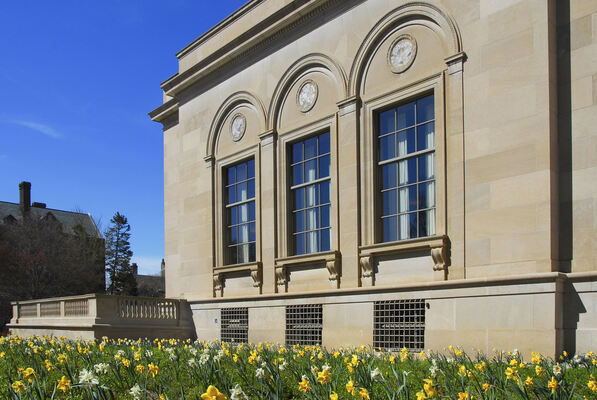The Stanley D. Carpenter correspondence consists of letters that Carpenter wrote to his mother and grandmother while serving with the United States Marine Corps during the First World War. He described his experiences while training at the Quantico Marine Corps Base in Virginia and discussed conditions in the trenches in France. The collection also has 4 lists of items sent to Carpenter during his military service.
This collection consists of 60 letters and 2 postcards that Stanley D. Carpenter wrote to his mother and grandmother while serving with the United States Marine Corps during the First World War. The collection also has 4 lists of items sent to Carpenter during his military service.
Carpenter first wrote home from Port Royal, South Carolina, on February 21, 1917, to report his 4-year enlistment, and he regularly corresponded with his mother throughout his time in the military. His early letters reveal his enthusiasm for military life and describe several aspects of his training, including his daily routine and his uniform and equipment allotments, at marine corps bases at Parris Island, South Carolina; Portsmouth, Virginia; and Quantico, Virginia. Several of his letters have enclosures, such as two pieces of palm for Palm Sunday (March 11, 1917); a color print of a soldier, labeled to illustrate Carpenter's equipment (March 15, 1917); a printed copy of the Marines' Hymn (May 8, 1917); and a program from the Academy of Music in Norfolk, Virginia (May 13, 1917). By May 1917, he anticipated being sent to France, and on June 7, 1917, mentioned seeing Woodrow Wilson while visiting Washington, D. C. Several of these letters are sealed with American flag stickers.
Carpenter wrote his first letter from France on July 19, 1917, assuring his mother that he had arrived safely and in good health, and wrote frequently about the war and his experiences. He initially visited the local Y.M.C.A., though he later severely criticized the organization. He mentioned his religious habits and those of other soldiers, and his unit regularly participated in drill exercises. By January 1918, Carpenter began to serve on the front lines, and he later provided a detailed account of life in the trenches (May 2, 1918). While in France, he also described his quarters, local French houses, and inspections by General John J. Pershing. He wrote his last letter on May 30, 1918, and enclosed 3 receipts for money transfers.
Other correspondence includes a telegram that Caroline Carpenter sent to Stanley D. Carpenter on February 19, 1917, urging him to reconsider his enlistment and offering to pay for his return to Pennsylvania; a letter she wrote to the commanding officer of the Marine Barracks at Port Royal, South Carolina, asking him to look after Stanley (February 20, 1917); and a letter that Major W. Garland Fay wrote to Caroline Carpenter, apologizing for his inability to have Stanley assigned to a post closer to home [June 1917]. The collection also contains 4 lists of items sent to Stanley D. Carpenter during his military service.
